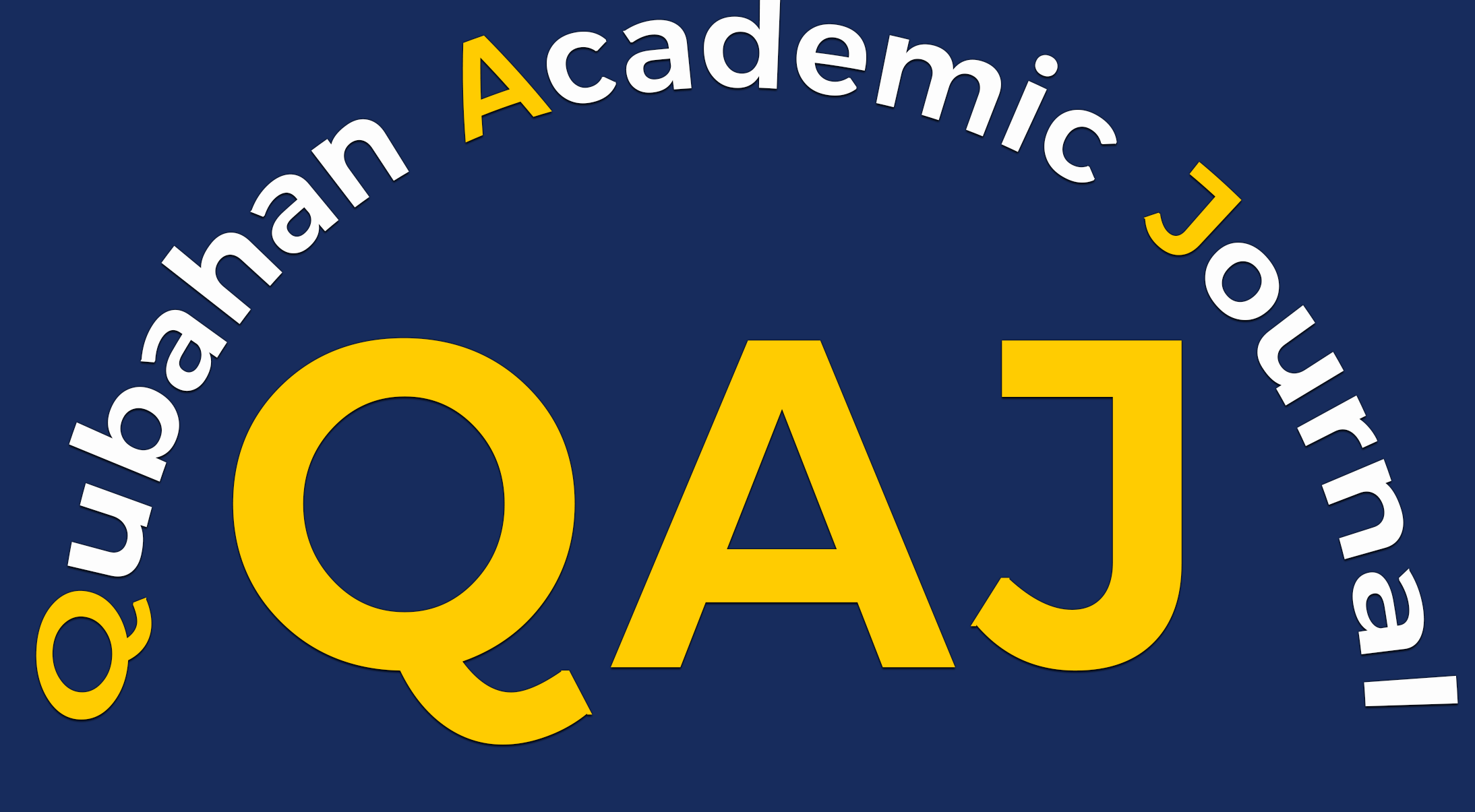PACE Technique to Error Categories: Its Effectiveness in Improving Word Problem Performance in Mathematics among the 7th Grade Students
DOI:
https://doi.org/10.48161/qaj.v3n4a169Abstract
This research determined the effectiveness of the PACE (Present the error, Analyze the error, Correct the Error, Explain the error) technique in improving the mathematics performance in solving word problems among 7th Grade students in Harnett Central Middle School, North Carolina, USA. The study utilized quasi-experimental research design with a validated researcher-made 7th Grade Mathematics test as the main instrument. The test was administered to 38 students before and after the implementation of the PACE technique. The data collected were treated using frequency counts, means, rates, Newman’s error analysis tool and t-test for dependent means. Before the implementation of the PACE technique, the students had a fair performance in solving word problems. In terms of their errors, transformation was the major error category in proportional relationships, reasoning about equations and inequalities and geometric and measurement reasoning; comprehension in reasoning with rational numbers, probabilistic reasoning and reasoning about population samples and comparing populations; and processing in reasoning about expressions. On the other hand, the students got an outstanding performance after the implementation of the PACE technique. After using the PACE technique, majority of the students had no errors in proportional relationships, reasoning with rational numbers, reasoning about expressions and reasoning about equations and inequalities; encoding errors in probabilistic reasoning and geometric and measurement reasoning; and transformation errors in reasoning about population samples and comparing populations. There was also a significant difference between the level of performance of students before and after using the PACE technique. Reading, comprehension, transformation and encoding are the error categories the PACE technique was most appropriate. And lastly, the PACE-Based 7th Grade Mathematics Workbook is very highly valid.
Downloads
References
Abdullah, A., Abidin, N.L.Z., & Ali, M. (2015). Analysis of students’ errors in solving higher
order thinking skills (HOTS) problems for the topic of fraction. Asian Social Science, 2(21), 133-142.
Alhassora, N.S.A., Abu, M.S., & Abdullah, A.H. (2017). Inculcating higher-order thinking skills in mathematics: Why is it so hard? Man In India, 97(13), 51-62.
Allen, D. (2007). Misconception analysis in algebra. [Doctoral Dissertation, Texas A & M University]. Proquest Dissertations Publishing.
Chiphambo, S. M. & Mtsi, N. (2021). Exploring Grade 8 errors when learning about the surface area of prisms. EURASIA Journal of Mathematics, Science and Technology Education, 17 (8), 1-10. Doi: https://doi.org/10.29333/ejmste/10994
Clement, J. (1982). Algebra word problem solutions: Thought process underlying a common misconception. Journal for Research in Mathematics Education, 13 (1), 16-30.http://links.jstor.org/sici?sici?=00218251%281928201%3A1%216%3AAWPSTP%3E2.0.CO%3B2-P.
Cook, T.D., Campbell, D.T. (1979). Quasi-experimentation: Design & analysis issues in field settings. Boston, MA: Houghton Mifflin.
Egodawatte, G. (2009). Is algebra really difficult for all students? Acta Didactica Napocensia, 2(4), 101-106. http://dppd.ubbcluj.ro /adn/article_2_4_10.pdf.
Elis, J. (2013). Diagnostic test in college algebra for freshman non-education students of West mead International School: Input to proposed remedial activities. Asia Pacific Journal of Multidisciplinary Research, 1(1), 37-50. https://www.academia.edu/5463264/Diagnostic_Test_in_College_Algebra_for_Freshman_NonEducation_Students_of_Westmead_International_School_Input_to_Proposed_Remedial_Activities.
Hariyani, S. (2018). Errors identification in solving arithmetic problems. Retrieved from https://www.researchgate.net/publication/329493227_Errors_Identification_In_Solving_Arithmetic_Problems.
Kastberg, D. (2016). Performance of U.S. 15-Year-Old Students in Science, Reading, and Mathematics Literacy in an International Context. Retrieved from https://nces.ed.gov/pubs2017/2017048.pdf.
Kwon, K. (2017). Novice programmers’ misconception of programming reflected problem solving plans. International Journal of Computer Science Education, 1(4), 1-12. DOI: 10.21585/ijcses.v1i4.19
Kurniati, U. Setiyani, & Sagita, L. (2021). Error analysis using Newmann procedures and the mathematical representation ability of pre-service teachers. Anatolian Journal of Education, 6(2), 135-156. DOI: https://doi.org/10.29333/aje.2021.6211a
Lewin, S. (2019). Purposive sampling in a qualitative evidence synthesis: a worked example from a synthesis on parental perceptions of vaccination communication parental perceptions of vaccination communication. Altamira Press.
Mullis, I.V,S., Martin, M., Foy, P. Arora, A. (2012). TIMSS 2011 International results in mathematics. TIMSS & PIRLS International Study Center, Lynch School of Education, Boston College.
Muhaimin, Asrial, Habibi A, Mukminin A, Hadisaputra P. (2020). Science teachers' integration of digital resources in education: A survey in rural areas of one Indonesian province. Heliyon, ;6(8):e04631. doi: 10.1016/j.heliyon.2020.e04631. PMID: 32793838; PMCID: PMC7408340.
Newman, M. (1977). Strategies for diagnosis and remediation.‖ Victorian Institute for Educational Research Bulletin. Sydney: Harcourt, Brace Jovanovich.
Prasojo L. D., Habibi A, Mohd Yaakob MF, Pratama R, Yusof MR, Mukminin A, Suyanto, Hanum F. (2020). Teachers' burnout: A SEM analysis in an Asian context. Heliyon, 6(1):e03144. doi: 10.1016/j.heliyon.2019.e03144. PMID: 31938746; PMCID: PMC6953709.
Ragma, F. (2014). Error analysis in college algebra in the higher education institutions of la union. [Unpublished doctoral dissertation, Saint Louis College] San Fernando City, La Union.
Rakimahwati, Ismet, S., Zainul, R., Roza, D., & Mukminin, A. (2022). The Development of the Educational Game to Improve Logical/ Mathematical Intelligence. Journal of Higher Education Theory and Practice, 22(7). https://doi.org/10.33423/jhetp.v22i7.5266
Rohmah, M. (2018). Analysis problem solving in mathematical using theory newman. EURASIA Journal of Mathematics, Science and Technology Education, 1(1), 671-681. DOI: 10.12973/ejmste/80630
Rosli, R. (2016). An error analysis of matriculation students’ permutations and combinations. Indian Journal of Science and Technology, 9(4), 1-6. DOI: 10.17485/ijst/2016/v9i4/81793
Saleh, K., Yuwono, I., As’ari, A. R., Sa’dijah, C. (2017). Errors analysis solving problems analogies by Newman procedure using analogical reasoning. International Journal of Humanities and Social Sciences, 9 (1), 17-26. https://pdfs.sem anticscholar.org/4e60/c727b3a568e67ec32b06b21d527351866510.pdf.
Sinay, E. (2018). Teaching and learning mathematics research series II: Effective Intervention Strategies. Toronto District School Board.
Triliana, T. and Asih, E. (2018) Analysis of students’ errors in solving probability based on Newman’s error analysis. IOP Conference Series: Journal of Physics: Conference Series 1211 (2019) 012061 IOP Publishing. DOI:10.1088/1742-6596/1211/1/01206
Yugdu, K. (2020). The effect of chance success on equalization error in test equation based on classical test theory. International Journal of Prgressive Education, 16(2), 218-229. DOI: 10.29329/ijpe.2020.241.15
Zamzam, K. F. & Patricia, F.A. (2018). Error analysis of newman to solve the geometry problem in terms of cognitive style. Advances in Social Science, Education and Humanities Research, 160 (1), 24-27. DOI: https://doi.org/10.2991/incomed-17.2018.5
Downloads
Published
How to Cite
Issue
Section
License
Copyright (c) 2023 Qubahan Academic Journal

This work is licensed under a Creative Commons Attribution-NonCommercial-NoDerivatives 4.0 International License.











